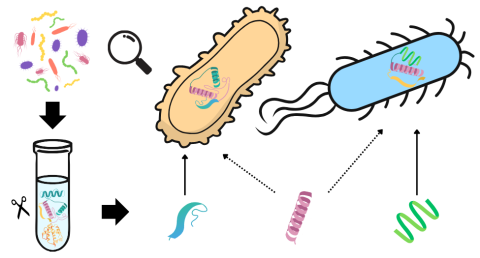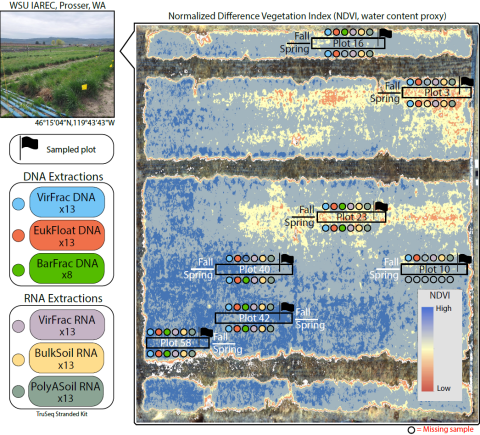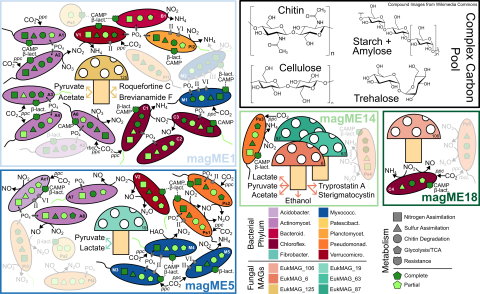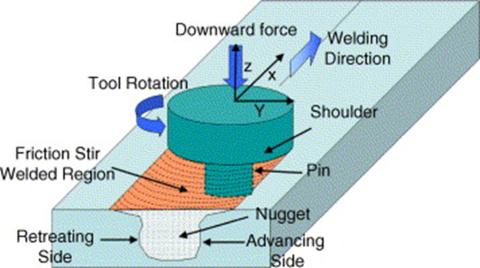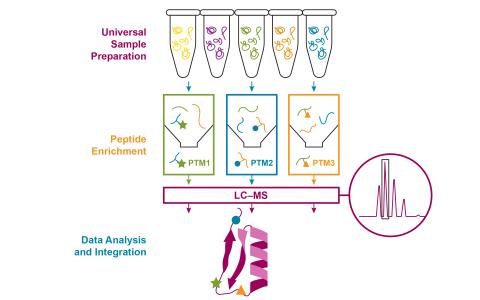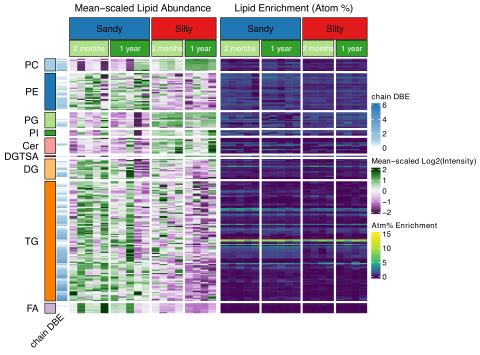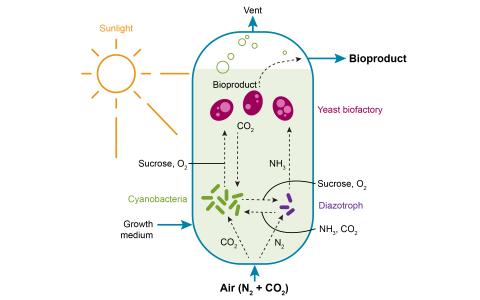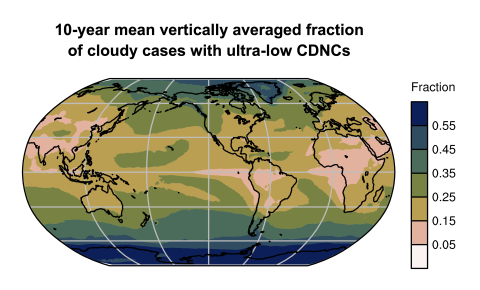Created on 2025-11-18 by LN Anderson ; Last Updated 2025-12-01 RhizoGrid System Indexed Sorghum Rhizosphere Drought Tolerance Multi-Omics Identification of spatially resolved biomarkers of drought in Sorghum bicolor rhizosphere molecular-microbe interactions using a novel root cartography "RhizoGrid...
Filter results
Category
- (-) Scientific Discovery (378)
- Biology (262)
- Earth System Science (165)
- Human Health (112)
- Integrative Omics (74)
- Microbiome Science (49)
- National Security (32)
- Computational Research (25)
- Computing & Analytics (18)
- Energy Resiliency (13)
- Chemical & Biological Signatures Science (12)
- Weapons of Mass Effect (12)
- Materials Science (11)
- Chemistry (10)
- Data Analytics & Machine Learning (9)
- Computational Mathematics & Statistics (7)
- Data Analytics & Machine Learning (7)
- Renewable Energy (7)
- Atmospheric Science (6)
- Visual Analytics (6)
- Ecosystem Science (5)
- Coastal Science (4)
- Energy Storage (4)
- Plant Science (4)
- Solar Energy (4)
- Bioenergy Technologies (3)
- Energy Efficiency (3)
- Transportation (3)
- Cybersecurity (2)
- Distribution (2)
- Electric Grid Modernization (2)
- Grid Cybersecurity (2)
- Wind Energy (2)
- Advanced Lighting (1)
- Computational Mathematics & Statistics (1)
- Environmental Management (1)
- Federal Buildings (1)
- Geothermal Energy (1)
- Grid Analytics (1)
- Grid Energy Storage (1)
- High-Performance Computing (1)
- Subsurface Science (1)
- Terrestrial Aquatics (1)
- Vehicle Technologies (1)
- Waste Processing (1)
- Water Power (1)
Tags
- Virology (77)
- Immune Response (51)
- Time Sampled Measurement Datasets (51)
- Differential Expression Analysis (46)
- Gene expression profile data (45)
- Homo sapiens (42)
- Predictive Phenomics (34)
- Mass spectrometry data (32)
- Multi-Omics (32)
- Viruses (27)
- Omics (26)
- Mass Spectrometry (25)
- Soil Microbiology (24)
- Health (23)
- Virus (23)
- MERS-CoV (19)
- Mus musculus (19)
- Proteomics (18)
- sequencing (13)
- West Nile virus (13)
- Genomics (12)
- High Throughput Sequencing (11)
- Influenza A (11)
- TA2 (11)
- Metagenomics (10)
- PerCon SFA (10)
- S. elongatus PCC 7942 (10)
- TA1 (10)
- Ebola (9)
- Microbiome (8)
This data package contains processed LC-MS proteomics results and analysis scripts associated with the paper "Assessing Degenerate Peptide Resolution Methods using a Ground Truth Dataset". In this study, we designed an artificial microbial community to create a ground truth, simulated metaproteomic...
Category
Please cite as : Josué A. Rodríguez-Ramos, Amy E. Zimmerman, Ruonan Wu, Sheryl Bell, Trinidad Alfaro, Kirsten Hofmockel, William C. Nelson. 2025. Inter-Kingdom Viral Interactions. [Data Set] PNNL DataHub. https://doi.org/10.25584/2583337 This data is published under a CC0 license . The authors...
Category
Please cite as : Robert E. Danczak, Sheryl Bell, Evan Warburton, Trinidad Alfaro, Kirsten Hofmockel, Amy E. Zimmerman, William C. Nelson, 2025. Prokaryotic and eukaryotic interactions along a moisture gradient . [Data Set] PNNL DataHub. https://doi.org/10.25584/2574929 This data is published under a...
Category
Category
Category
Category
Category
Created 2025-06-03T23:16:59+00:00 by LN Anderson .Currently pending DOI assignment for public release. Integrative SP3 Workflow for Multi-PTM Proteomics Profiling (PPI-TZ-DP0) The purpose of this experiment was to evaluate a new standardized method approach for proteomics sample processing designed...
Category
Data package for Lipids represent a dynamic, yet stable pool of microbially-derived soil carbon This data is published under a CC0 license . The authors encourage data reuse and request attribution by referencing the below citations for the data packages and associated manuscript. Please cite as...
Please cite as : McClure, R. and Janet Jansson. 2025. EVT 16s Data and Large Supplementary Files . [Data Set] PNNL DataHub. https://doi.org/10.25584/2530740. This data is published under a CC0 license . The authors encourage data reuse and request attribution by referencing the above citations for...
Category
Created 2024-12-22T20:31:04+00:00 by LN Anderson Rhodotorula toruloides Nitrogen Limitation PTM Profiling Multi-Omics (TZ-DP1) The purpose of this experiment was to evaluate the regulatory stress response of Oleaginous yeast species Rhodotorula toruloides NBRC 0880 (JGI strain IFO0880 v4.0 ) under...
Category
Created 2024-12-20T23:47:47+00:00 by LN Anderson ; Last updated 2025-05-09T15:55:34+00:00 S. elongatus PCC 7942 Circadian Control Bioproduction Metabolomics (PB-DP5) The purpose of this experiment was to evaluate how circadian clock regulation impacts carbon partitioning between storage, growth, and...
Category
Created 2024-12-20T23:47:47+00:00 by LN Anderson ; Last updated 2025-05-09T15:55:34+00:00 S. elongatus PCC 7942 Circadian Control Bioproduction Transcriptomics (PB-DP3) The purpose of this experiment was to evaluate how circadian clock regulation impacts carbon partitioning between storage, growth...
Category
This dataset includes numerical simulation results obtained with the E3SMv2 model using the F2010 configuration (’‘compset’’) at the ne30pg2 horizonal resolution with 72 vertical grid layers in the atmosphere. All tunable parameters were set to their default values except the non-zero lower bound of...


